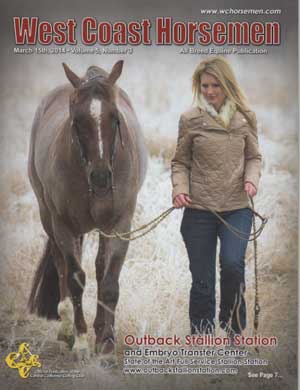
West Coast Horsemen – March 2014
An oft quoted saying of Napoleon Bonaparte is that “An army marches on its stomach”. This age old adage of military logistics is also tremendously relevant to us as horse and mule riders and campers. After all, a great camp dinner is often a beautiful flourish to a perfect day in the saddle. This month let’s talk about a few of the different ways to stay fed while camping with our mounts.
It’s no secret that I’ve enjoyed a long association with the Back Country Horsemen in various capacities. It may however be a surprise to some that my involvement grew not from the many trail advocacy efforts of the organization but from the legendary Dutch oven cooking that often goes along with BCH events. Yes, the TrailMeister is a chow hound. The promise of a Dutch oven feast is often the easiest way to have me attend a ride or give a talk on land navigation or horse camping and it was these skillfully prepared meals that kept me around to learn how much the Back Country Horsemen group does to ensure that trails stay open to livestock.
The Dutch oven, this thick walled chunk of cast iron (or sometimes aluminum) has been around for hundreds of years and for good reason; they’re wonderful for wood fired cooking and can produce a meal fit for royalty. About the only downfall to a Dutch oven is its weight. At nearly 15 pounds for a smallish oven I don’t envy Lewis and Clark who hauled one across the continent during their Corps of Discovery Expedition. The weight is the biggest reason why you’ll most often find Dutch oven feasts at the trailhead and not so often in the backcountry. If we ever meet while I’m trailhead camping stop by for a bite, chances are I’ll have my Dutch oven on the fire and Spaghetti will be on the menu.
While a Dutch oven is faultless for trailhead cooking, the small size and negligible weight of modern backpacking stoves make them perfect for backcountry trips. In my opinion there aren’t many things better than a quiet breakfast in a remote alpine meadow while watching the animals graze in the morning. A small backpack stove is perfect for providing the cup of coffee and oatmeal for this type of breakfast repast. When I venture into the backcountry without pack stock, weight and volume are my prime considerations and to reduce the load as much as possible I’ve found that a single burner stove works well for me. Feather light and fitting in the palm of your hand these stoves easily produce the piping hot water I need for coffee and my (in)famous Backcountry Thanksgiving meal of dehydrated potato flakes, Stovetop Stuffing, dried cranberries, and a small pouch of canned chicken. It may not sound like much, and it looks even worse, but when the fish aren’t biting this meal is truly a Backcountry Thanksgiving!
You might ask “if weight is such a concern why not just make a campfire and use that for cooking”? I love a good campfire and whenever possible you’ll find one at my camp. Unfortunately, camp fires aren’t always a viable option. Open fires are often illegal during the summer months when we’re in the backcountry and if fires are allowed there are no guarantees that dry wood can be found. For peace of mind and a full stomach, a camp stove of some type is often your best bet.
An in between camp stove that works quite well when pack stock are in the picture is the classic, and old reliable, Coleman Camp Stove. These nearly indestructible work horses allow for multi course dishes in the grandest restaurant of all; the great outdoors. My first and most memorable backcountry trip was with two long time Backcountry Horsemen of Washington members who introduced me to the world of camping with pack animals. The meal that I made by adding hot water to a plastic bag of “stuff” was pleasant but in no way compared to the grand meal of steak, zucchini, onions, and green beans that were deftly prepared on a battered two burner stove pulled from the depths of a pack mule’s pannier bag. I’m eternally grateful not just that Russ and Ken shared their feast, but more so that they introduced me to the experience of enjoying the backcountry with horse and mules. I hope everyone who reads this has the good fortune to find mentors similar to these two wonderful gentlemen.
As I’ve transitioned from a backcountry greenhorn to someone more comfortable in remote wilderness areas I keep trying to incorporate better meal times into the experience while still reducing weight and volume to minimize the need for a pack animal. To this end I’ve recently begun experimenting with camp ovens. Weighing about a pound and folding into the size of a hardcover book these little wonders may just be the ticket to my version of camp nirvana; fresh brownies. I’ll let you know how these work out after I’ve been out a few more times with them.
I hope that this month has opened up a few options for you in terms of eating well while camping with your livestock. As always, for more information about trail riding and North America’s largest directory of horse trails and camping areas in the U.S. visit www.TrailMeister.com.


